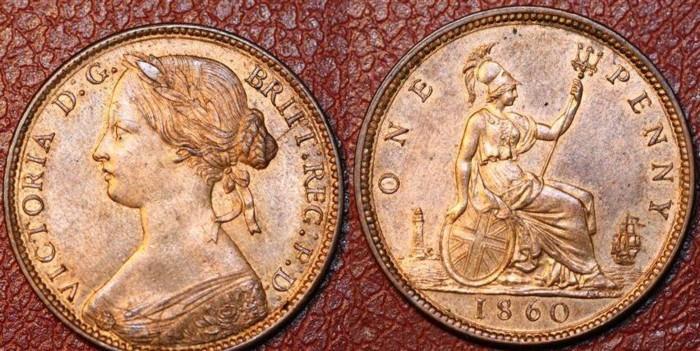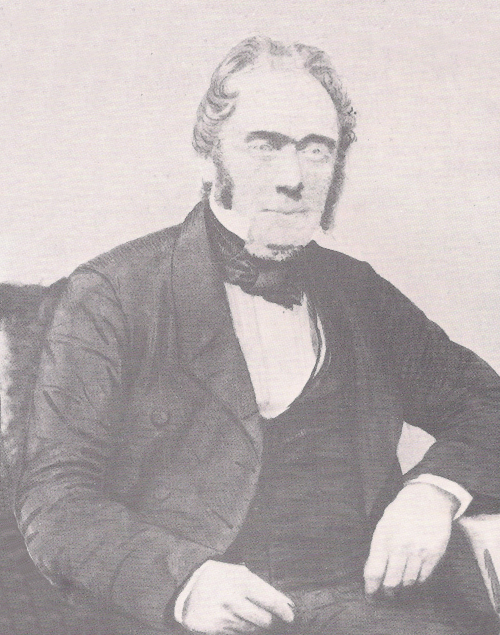|
Bun Penny
The bun penny is a bronze pre-decimal penny (1d) which was issued by the Royal Mint from 1860 to 1894. The designs of both obverse and reverse are by Leonard Charles Wyon. It was the first type of bronze penny issued by the Royal Mint, the incipient issue of a series which was to last until decimalisation in 1971. The bun penny gets its name from Queen Victoria's hairstyle, which is gathered together in a 'bun'. The bun penny was common in circulation in the United Kingdom until the 1960s, and numerous varieties are known, some of which are of exceptional rarity. The series is one of the most commonly collected in the numismatics of the UK. History The Coinage Act 1859 extended the Coinage Offences Act 1832 The Coinage Offences Act 1832 ( 2 & 3 Will. 4. c. 34) was an act of the Parliament of the United Kingdom that consolidated for the United Kingdom all legislation concerning the counterfeiting and clipping of coins into one act. Such conduct w ..., so far as it related ... [...More Info...] [...Related Items...] OR: [Wikipedia] [Google] [Baidu] |
Royal Mint
The Royal Mint is the United Kingdom's official maker of British coins. It is currently located in Llantrisant, Wales, where it moved in 1968. Operating under the legal name The Royal Mint Limited, it is a limited company that is wholly owned by His Majesty's Treasury and is under an exclusive contract to supply the nation's coinage. As well as minting circulating coins for the UK and international markets, The Royal Mint is a leading provider of precious metal products. The Royal Mint was historically part of a series of mints that became centralised to produce coins for the Kingdom of England, all of Great Britain, the United Kingdom, and nations across the Commonwealth. The Royal Mint operated within the Tower of London for several hundred years before moving to what is now called Royal Mint Court, where it remained until the 1960s. As Britain followed the rest of the world in decimalising its currency, the Mint moved from London to a new 38-acre (15 ha) plant in ... [...More Info...] [...Related Items...] OR: [Wikipedia] [Google] [Baidu] |
Obverse And Reverse
The obverse and reverse are the two flat faces of coins and some other two-sided objects, including paper money, flags, seals, medals, drawings, old master prints and other works of art, and printed fabrics. In this usage, ''obverse'' means the front face of the object and ''reverse'' means the back face. The obverse of a coin is commonly called ''heads'', because it often depicts the head of a prominent person, and the reverse ''tails''. In numismatics, the abbreviation ''obv.'' is used for ''obverse'',David Sear. ''Greek Imperial Coins and Their Values.'' Spink Books, 1982. p. xxxv. while , )(Jonathan Edwards. ''Catalogue of the Greek and Roman Coins in the Numismatic Collection of Yale College, Volume 2.'' Tuttle, Morehouse & Taylor, 1880. p. 228. and ''rev.''Allen G. Berman. ''Warman's Coins And Paper Money: Identification and Price Guide.'' Penguin, 2008. are used for ''reverse''. Vexillologists use the symbols "normal" for the obverse and "reverse" for the reverse ... [...More Info...] [...Related Items...] OR: [Wikipedia] [Google] [Baidu] |
Leonard Charles Wyon
Leonard Charles Wyon (23 November 1826 – 20 August 1891) was a British engraver of the Victorian era most notable for his work on the gold and silver coinage struck for the Golden Jubilee of Queen Victoria in 1887 and the bronze coinage of 1860 with the second ("bun") head portrait, in use from 1860 to 1895. Career The eldest son of chief engraver William Wyon and his wife, Catherine Sophia, née Keele (died 1851), Leonard Charles Wyon was born in one of the houses in the Royal Mint in 1826, and was educated at Merchant Taylors' School. L. C. Wyon's father taught him art and also from his father he inherited great skill in die engraving. By the age of 16 he had already made several medals and some of his early work is displayed in the British Museum's Numismatic collection. He first exhibited at the Royal Academy in 1843. From 1844 he studied at the Royal Academy Schools and in the same year, at the age of just 18, he became Second Engraver under his father at the Royal ... [...More Info...] [...Related Items...] OR: [Wikipedia] [Google] [Baidu] |
Decimal Day
Decimal Day () in the United Kingdom and in Republic of Ireland, Ireland was Monday 15 February 1971, the day on which each country decimalised its respective £sd currency of pound sterling, pounds, Shilling (British coin), shillings, and penny, pence. Before this date, both the British pound sterling and the Irish pound (symbol "£") were subdivided into 20 shillings, each of 12 (old) pence, a total of 240 pence. With decimalisation, the pound kept its old value and name in each currency, but the shilling was abolished, and the pound was divided into 100 new pence (abbreviated to "p"). In the UK, the new coins initially featured the word “new”, but in due course this was dropped. Each new penny was worth 2.4 old pence ("d.") in each currency. Coins of half a new penny were introduced halfpenny (British decimal coin) , in the UK and Halfpenny (Irish decimal coin), in Ireland to maintain the approximate granularity of the old penny, but these were dropped in the UK in ... [...More Info...] [...Related Items...] OR: [Wikipedia] [Google] [Baidu] |
Bun (hairstyle)
A bun is a type of hairstyle in which the hair is pulled back from the face, twisted or plaited, and wrapped in a circular coil around itself, typically on top or back of the head or just above the neck. A bun can be secured with a hair tie, barrette, bobby pins, one or more hair sticks, or a hairnet. Hair may also be wrapped around a piece called a "rat". Various hair bun inserts may be used to create donut-shaped buns. Double bun Double or pigtail buns are often called , which is also a type of Japanese dumpling (also called ). In China, it is common among young girls or women to have the two buns hairstyle, which is called yaji (丫髻) or shuangyaji (丫髻). The name comes from having hair buns, often two buns on either side of the crown of the head, giving the hair a shape similar to the Chinese character 丫. This hairstyle was worn during many different Chinese dynasties. There are also other hair styles called (). It was a commonly used hairstyle up until the earl ... [...More Info...] [...Related Items...] OR: [Wikipedia] [Google] [Baidu] |
Numismatics
Numismatics is the study or collection of currency, including coins, tokens, paper money, medals, and related objects. Specialists, known as numismatists, are often characterized as students or collectors of coins, but the discipline also includes the broader study of money and other means of payment used to resolve debts and exchange good (economics), goods. The earliest forms of money used by people are categorised by collectors as "odd and curious", but the use of other goods in barter exchange is excluded, even where used as a circulating currency (e.g., cigarettes or instant noodles in prison). As an example, the Kyrgyz people used horses as the principal currency unit, and gave small change in sheepskin, lambskins; the lambskins may be suitable for numismatic study, but the horses are not. Many objects have been used for centuries, such as Cowry, cowry shells, precious metals, Cocoa beans#History, cocoa beans, Rai stones, large stones, and Gemstone, gems. Etymology Firs ... [...More Info...] [...Related Items...] OR: [Wikipedia] [Google] [Baidu] |
Coinage Offences Act 1832
The Coinage Offences Act 1832 ( 2 & 3 Will. 4. c. 34) was an act of the Parliament of the United Kingdom that consolidated for the United Kingdom all legislation concerning the counterfeiting and clipping of coins into one act. Such conduct was often considered to be high treason: this act downgraded the offence to felony and abolished the death penalty for all coinage offences. Background In the United Kingdom, acts of Parliament remain in force until expressly repealed. Blackstone's ''Commentaries on the Laws of England'', published in the late 18th-century, raised questions about the system and structure of the common law and the poor drafting and disorder of the existing statute book. In 1806, the Commission on Public Records passed a resolution requesting the production of a report on the best mode of reducing the volume of the statute book. From 1810 to 1825, ''The Statutes of the Realm'' was published, providing for the first time the authoritative collection of ... [...More Info...] [...Related Items...] OR: [Wikipedia] [Google] [Baidu] |
Heaton Mint
The Birmingham Mint was a coining mint and metal-working company based in Birmingham, England. Formerly the world's largest privately owned mint, the company produced coins for many foreign nations including France, Italy, China, and much of the British Empire during the 19th century. Beginning life in 1817 as a family-run brass fittings maker, the company later purchased equipment from the defunct Soho Mint to begin its own coin production. Over the subsequent decades the mint won contracts to mint national currencies, and built minting facilities worldwide so that at its height the Birmingham Mint's capacity surpassed that of even the Royal Mint. By the early 2000s disagreement with the Royal Mint over foreign contracts led to a slump in sales, cumulating in the mint's eventual closure in 2003 ending its almost 200-year history. According to Companies House, however, as of 2021 a revived mint continues to operate, albeit with little business activity. History 18th-19th ce ... [...More Info...] [...Related Items...] OR: [Wikipedia] [Google] [Baidu] |





